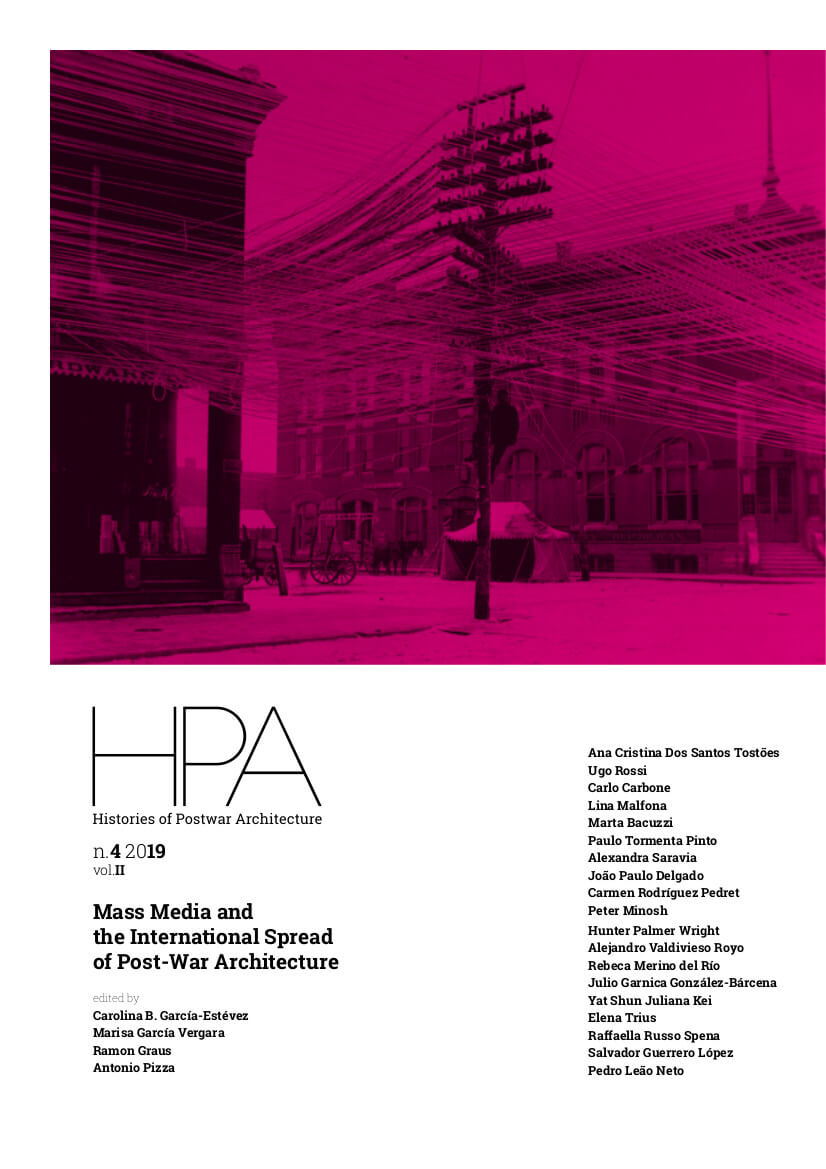Building Silicon Valley. Corporate Architecture, Information Technology and Mass Culture in the Digital Age
DOI:
https://doi.org/10.6092/issn.2611-0075/9662Keywords:
Mass Culture, Information Technology, Corporation, Creative Work, CampusAbstract
The examination of the greatest technopolis in the world is a way of exploring how an architectural as well as cultural, economic, and urban—or better, suburban—phenomenon, linked to a specific framework, has affected an international context. By studying Silicon Valley’s phases of development, from its period of militarization during the Cold War to the era of counterculture and then of cyberculture, we can reread the history of information technology’s centers of production that have contributed to broadcast the Valley’s architectural and political image. Starting from the headquarters of Varian Associates—designed by Erich Mendelsohn and erected in Stanford Industrial Park in 1951 —and moving through the campuses that consolidated the image of creativity for which Silicon Valley became well-known in the Eighties, we will be able to have a retrospective look at the physical as well as virtual organization of the first IT corporations which supported the rising of the most powerful medium, the internet. This paper’s origin point is the examination of three texts written by the historian Reyner Banham between 1980 and 1987, and in particular the essay “La fine della Silicon Valley” [The end of Silicon Valley], published only in Italian in Casabella. References to facts, considerations, and events, taken from Banham’s texts, pepper this study like a parallel story that problematizes this area, highlighting both its technological heroism and its approaching demise.
Downloads
References
Banham, Reyner, “The End of Silicon Valley” [from the Banham’s manuscript, unpublished] (The Getty Research Institute, Research Library, Special Collections);
Banham, Reyner, “The Architecture of Silicon Valley”, New West, n. 5, September 22, 1980, 47-51;
Banham, Reyner, “Silicon Style”, The Architectural Review, n. 169, May 1981, 283-90;
Banham, Reyner, “The Greening of high tech in Silicon Valley”, Architecture, March 1985, vol. 74, 110-119;
Banham, Reyner, “La fine della Silicon Valley”, Casabella, n. 539, October 1987, 42-43;
Betsky, Aaron, Introduction, in STUDIOS Architecture, STUDIOS Architecture: Selected and Current Works, Mulgrave, Victoria: Images Publishing, 2002, 10;
Biraghi, Marco, Swinging Banham Revisited, in Biraghi, Marco (ed.), Reyner Banham. Architettura della Seconda età della macchina. Scritti 1955-1988, Milano: Mondadori Electa, 2004;
Brown, Karl F., Floyd Ray, California Missions. A Guide to the Historical Trails of the Padres, New York: Garden City Publishing & Co., 1939;
Christopher Arnold, “Letters. Mendelsohn in Silicon Valley” and “Reyner Banham responds”, Architecture, 5/1985, 16;
Cohen, Jean-Louis, Architecture in Uniform. Designing and Building for the Second World War. Paris: Editions Hazan, 2011;
Gilles Deleuze, “Postscript on the Societies of Control”, October, Vol. 59, Winter, 1992, 3-7;
Kenneth, “A House of Ivy League Values”, Architectural Design, July 1968, 305-11;
Fani Ciotti, Vincenzo, “La casa futurista. Indipendente - Mobile - Smontabile - Meccanica - Esilarante,” in Roma Futurista, n. 81-82, 25 April-May 1920;
Harwood, John, The Interface. IBM and the Tranformation of Corporate Design, 1945-76, Minneapolis: University of Minnesota Press, 2011;
Hayes, Dennis “Sil Val: The Chips Of Our Lives”, Processed World, n. 10;
Kargon, Robert, Stuart W. Leslie and Erica Shoenberger, “Far Beyond Big Science: Science Regions and the Organization of Research and Development”, in Galison Peter and Bruce Hevly (eds.), Big Science: The Growth of Large Scale Research, Stanford: Stanford University Press, 1992;
Lang Ho, Cathy, “Silicon Valley”, Metropolis, October 1995, 70-72;
Malfona, Lina, “The Apple Case. Architecture, Global Market, and Information Technology in the Digital Age”, Ardeth, n. 03, Fall 2018, 53-75;
Malfona, Lina, “The Circle: Geographies of Network vs. Geometries of Disjunction”, The Avery Review, issue 30, March 2018, online journal: https://averyreview.com/issues/30/the-circle, seen on July 14th, 2019;
Martin, Reynold, and Kadambari Baxi, Multinational City. Architectural Itineraries, Barcellona: Actar, 2007;
Mozingo, Louise A., Pastoral Capitalism: A History of Suburban Corporate Landscapes, Cambridge, MA: The MIT Press, 2011;
Mumford, Lewis, The Architecture of the Bay Region, in AA. VV., Domestic Architecture of the San Francisco Bay Region (exhibition at the Museum of Art, Civic Center, San Francisco, September 16, October 30, 1949), unpaginated;
New Games Foundation, New Games Book, Main Street Books, 1976;
Packard, David, The HP way: how Bill Hewlett and I built our company, New York: HarperBusiness, 1995;
Rappaport, Nina, Vertical Urban Factory, New York: Actar Publishers, 2015;
Saxenian, Anna Lee, Regional Advantage: Culture and Competition in Silicon Valley and Route 128, Cambridge: Harvard University Press, 1996;
Turner, Paul V., Campus, An American Planning Tradition, Cambridge and London: The MIT Press and New York: Architectural History Foundation, 1984;
Weitze, Karen J., California's Mission Revival, Los Angeles: Hennessey & Ingalls, 1984;
Winner, Langdon, Silicon Valley Mistery House, in Sorkin, Michael (ed.), Variations on a Theme Park: Scenes From The Few American City and the End of Public Space, New York: Hill and Wang, 1992, 31-55;
Wright, Gwendolyn, “The Virtual Architecture of Silicon Valley”, Journal of Architectural Education, vol. 54, n. 2, November 2000, 88-94;
Zevi, Bruno, Erich Mendelsohn: The Complete Works, Basel, Boston: Birkhäuser, 1999;
Downloads
Published
How to Cite
Issue
Section
License
Copyright (c) 2019 Lina Malfona
The copyrights of all the texts on this journal belong to the respective authors without restrictions. Authors grant to the journal a non-exclusive right to publish their work.
This journal is licensed under a Creative Commons Attribution 4.0 International License (full legal code).
See also our Open Access Policy.






